
Yeshua Leading His Disciples (1915, artist unknown, colored)
“Count off seven weeks [shavuot] from the time you begin to put the sickle to the standing grain.” (Deuteronomy 16:9)
What were the disciples of Yeshua (Jesus) doing for seven weeks after Passover?
For the first 40 days, they sometimes talked, walked, and ate with their risen Rabbi and Messiah. And they likely did what all Jewish people were doing at that time.
They were Counting the Omer (Sefirat haOmer).

An omer of wheat could be a sheaf, which is a bundle of stalks (left) or individual grains (right).
Counting the Omer Leads to Liberty, Perfection, and Wholeness
Some Jewish authorities say an omer is a bundle of stalks (sheaves) of harvested grain. Others say it is just a small grain.
Yeshua resurrected the same day that the Jewish people were commanded to bring their omer of barley to the Temple as a wave offering. This day was also known as Firstfruits!
Firstfruits is a day to remember the Lord is our provider, so we give back to Him a portion of what He gives to us. It is also the day that Yeshua (Jesus) was resurrected, becoming the Firstfruits for all of us (1 Corinthians 15:20).
Yeshua’s resurrection was not meant to end God’s work on earth.
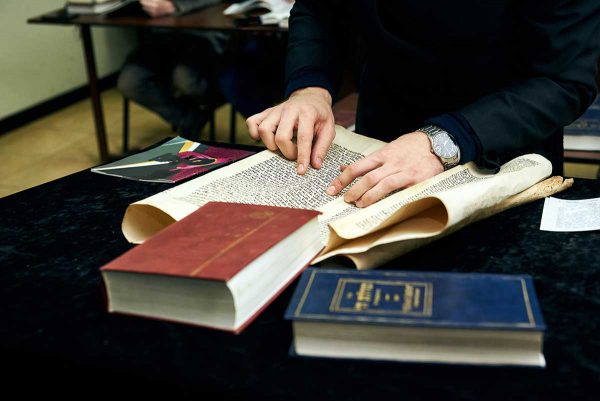
A rabbi reading the Torah.
On the contrary, the disciples who trained with Yeshua for more than three years now embarked on a time of waiting and preparing after His death and resurrection before beginning their new assignments. They just didn’t realize what God was planning for them.
During this time, the Jewish people were waiting, too—for Shavuot (also known as Pentecost from the Greek word pente, meaning 50).
The Torah instructs the Jewish people to count seven weeks (49 days) from the time of the wave offering until the evening of the festival of Shavuot.
“From the day after the Sabbath, the day you brought the sheaf [omer] of the wave offering, count off seven full weeks [Sabbaths].” (Leviticus 23:15)

The modern Hebrew letter zayin (above) has the numerical value of seven. The word zayin means weapon or sword in Hebrew. This not so scholarly connection between the number “seven” and “weapon” can help us remember a hard truth: we must prepare for warfare as we pursue wholeness and perfection.
Seven full weeks is 49 days.
Since the number seven (sheba) in Scripture often represents wholeness, perfection, and completion, these seven weeks are significant.
For example, in six days God created the universe. But on the seventh day, His work was completed and He rested (Genesis 2:2).
Therefore, the counting of the omer for seven weeks of seven days (49 days) represents the expectation of something that will bring perfection and completion into the world.
Yeshua’s Disciples Count the Omer
Jewish people don’t literally count stalks of grain. Each night after sunset (which is when the Hebrew day begins) they symbolically count the omer as they recite a blessing. Tonight, they will say:
“Blessed are You, Lord our God, King of the Universe, who has sanctified us with His commandments, and commanded us concerning counting the Omer. Today is 26 days, which is three weeks and five days of the Omer.”
Before His death, Yeshua most likely counted the omer along with His disciples. And it is during this time of counting that Yeshua resurrects and appears for 40 days, giving “many convincing proofs that he was alive and spoke about the Kingdom of God” (Acts 1:3).
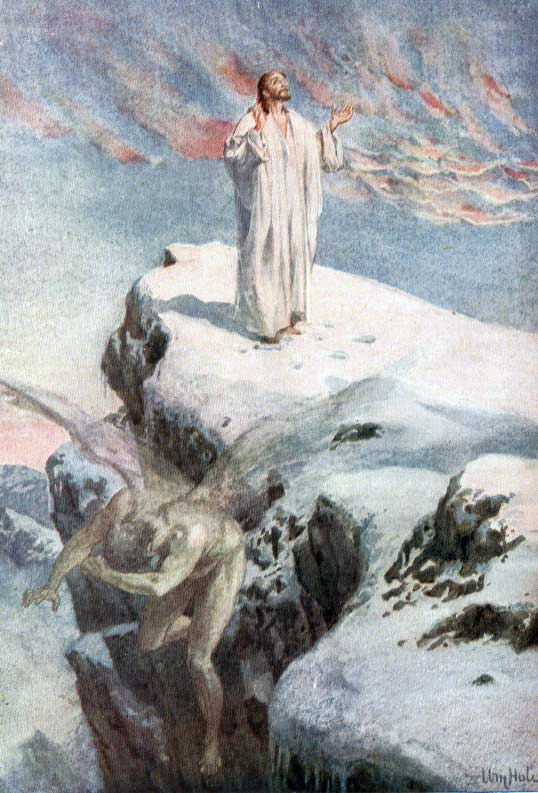
The Temptation of Messiah, by William Hole depicts Yeshua casting down the devil with the sword of the Word of God after he offered Yeshua all the kingdoms of the world. (Luke 4:1–13)
Forty is also a symbolic number — it represents preparation.
The Jews wandered in the desert for 40 years as God prepared the next generation to enter the Promised Land. And Yeshua Himself was tempted by Satan in the Judean desert for 40 days.
Now, during these 40 days after His resurrection, Yeshua set out to prepare His disciples for something big! (Acts 1:3)
First, He wanted to make sure that they knew He was alive. But they also needed to know that He was the prophesied Messiah, their Lord and God, and that they now had an important assignment to accomplish. So He makes several appearances.
Day 1: Yeshua appears to Mary Magdalene at the tomb (John 20:16), other women (Matthew 28:9), and disciples on the way to Emmaus. He even eats with those disciples later that day (Luke 24:13–30).
Day 2: He appears to Peter (Luke 24:34; 1 Corinthians 15:5) as well as the apostles who are in a locked room without Thomas. He shows them His hands and feet and says, “Peace be with you! As the Father has sent Me, I am sending you.” (John 20:19–23)
At this meeting, He opened their minds to understand the prophecies of Scriptures, telling them how “Messiah would suffer and rise again from the dead the third day, and that repentance for forgiveness of sins would be proclaimed in His name to all the nations, beginning from Jerusalem. …
“And behold, I am sending forth the promise of My Father upon you; but you are to stay in the city until you are clothed with power from on high.” (Luke 24:46–49)
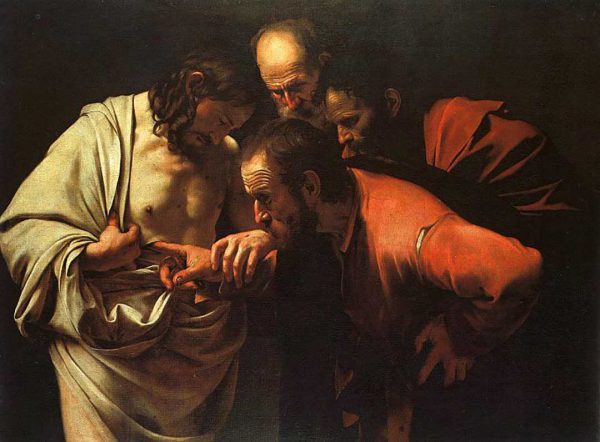
The Incredulity of Saint Thomas (1603), by Caravaggio
A Week Later: The apostles are in a locked room again, this time with Thomas, when Yeshua appears. Finally, after seeing and touching the scars of Yeshua, Thomas exclaims, “My Lord and my God!” (John 20:24–29)
Recognizing that Yeshua is more than a Rabbi — that He is God in the flesh — was a necessary step for accepting the Great Commission that He gives His disciples during this time of preparation:
“Go into all the world and preach the gospel to every creature. Whoever believes and is baptized (water immersion) will be saved, but whoever does not believe will be condemned.” (Mark 16:15–16)
And
“All authority in heaven and on earth has been given to Me. Therefore go and make disciples of all nations, baptizing them in the name of the Father, and of the Son, and of the Holy Spirit, and teaching them to obey all that I have commanded you. And surely I am with you always, to the very end of the age.” (Matthew 28:18–20)

Yeshua Appears to the Disciples after His Resurrection,(1906), by William Hole
To fulfill their mission, they needed the power of the Holy Spirit. They didn’t know what that really means or when it’s coming.
Yeshua only told them to wait in Jerusalem for “the promise of the Father” and for “power from on high.” (Luke 24:49)
So they wait. They pray together. They count the omer.
Meanwhile, Yeshua continues proving that He conquered death by appearing to 500 people at one time (1 Corinthians 15:6) and to James, the half-brother of Yeshua (1 Corinthians 15:7).
Day 40: Yeshua ascends to heaven, leaving the disciples to continue waiting, praying, and counting the omer without Him.
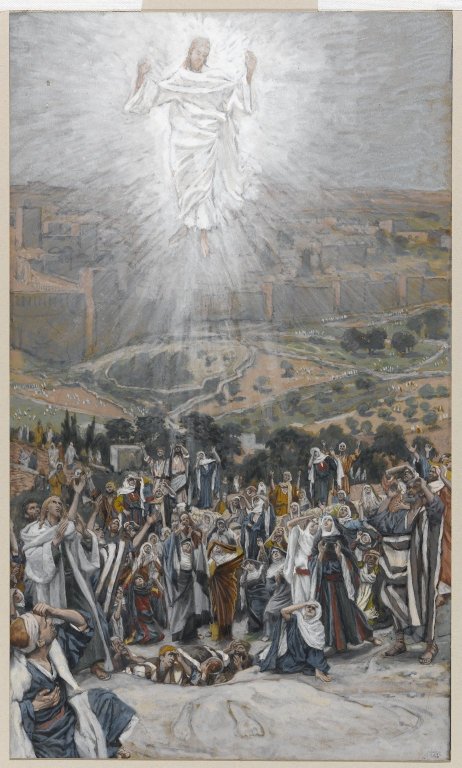
The Ascension, by James Tissot
Day 50 Arrives!
It is the day to remember God’s unfailing love for the Jewish people.
Because seven weeks have passed since the Feast of Firstfruits (when Yeshua resurrected) and the waving of the omer offering took place. This day is called the Feast of Weeks or Shavuot. (Exodus 34:22)
Before they eat any of their own harvested wheat, the Jewish people present a portion to the Lord this day. They also hold a sacred assembly.
“Count off fifty days up to the day after the seventh Sabbath, and then present an offering of new grain to the LORD.” (Leviticus 23:15–16)
Meanwhile, the apostles and other disciples are still waiting and praying together in Jerusalem as Yeshua instructed when suddenly …
“ … a sound like the blowing of a violent wind came from heaven and filled the whole house where they were sitting. All of them were filled with the Holy Spirit and began to speak in other tongues as the Spirit enabled them.” (Acts 2:1-4)
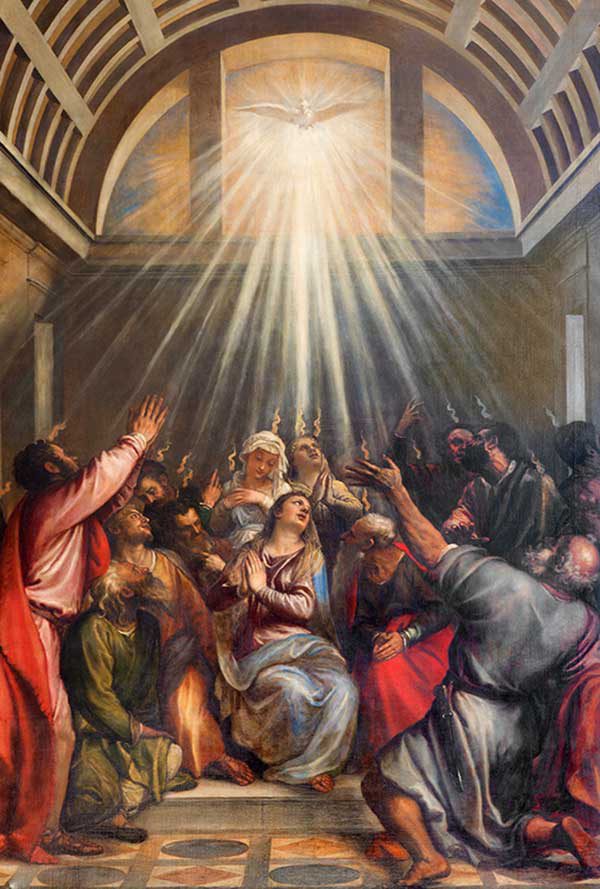
The Descent of the Holy Ghost (c. 1545), by Titian
Receiving the Power on High from God’s Ruach haKodesh (the Holy Spirit) enabled the apostles to speak the truth of the Messianic prophecies that Yeshua had opened their minds to understand.
Receiving His Spirit also sealed them for service in the kingdom of God and graduated them from students in training under Rabbi Yeshua to teachers and ambassadors of the Most High King of Kings.
And it seals us all as His children, as Yeshua said, “In Him, you also, after listening to the message of truth, the gospel of your salvation — having also believed, you were sealed in Him with the Holy Spirit of promise.” (John 3:5)
Go and Wait
We, too, can count the omer.
It reminds us each day to call upon Ruach haKodesh (the Holy Spirit) to lead us and empower us as He did for the disciples on Shavuot (Pentecost) over 2,000 years ago.
Like the disciples, we also have His work to do while here on earth.
If we have been empowered by God’s Holy Spirit, we are commissioned to do His work. We are on active duty. We are to go.
As Yeshua said, we are to go into all the world preaching the gospel, proclaiming repentance for the forgiveness of sins, and making disciples of all nations (Mark 16:15–16; Luke 24:46–49; Matthew 28:18–20).
While we work, we also wait and prepare ourselves for His return by becoming holy as He is holy, imitating our risen Savior and Lord.

Be a part of teaching Jewish people that Yeshua is the Messiah, that His return is drawing near, and that they can have the gift of Ruach Hakodesh, His Holy Spirit.
“Look! The LORD is coming from His dwelling place; He comes down and treads on the heights of the earth.” (Micah 1:3)








